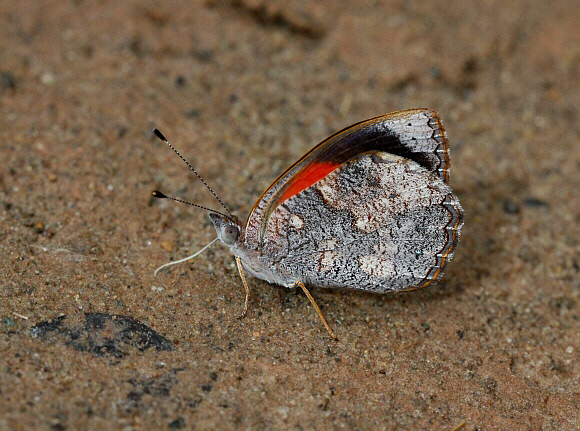
Haematera pyrame, Satipo, Peru – Adrian Hoskins
Introduction
The genus Haematera, previously known as Callidula, is closely allied to Perisama and Orophila. It comprises of a single species pyrame.
The upperside of the male is blackish, with the basal area of fore and hind wings a deep rosy pink colour. The forewings of the female are similar to those of the male, but the hindwings are entirely dark brown. In examples of both sexes from Colombia and Venezuela the pink colour is replaced by a more orange hue.
Haematera pyrame is distributed from Nicaragua to Argentina, and has 6 recognised subspecies.
Habitats
This species is found in disturbed habitats within humid deciduous forest, rainforest and cloudforest, usually at altitudes between about 200-1200m.
Lifecycle
The fully grown caterpillar is pale green, peppered with tiny white warts. It’s head bears a pair of large forward-projecting rosetted spines. The foodplant is Urvillea ulmacea ( Sapindaceae ).
Adult behaviour
Males are often seen mud-puddling on sunny river-beaches, dirt roads and wide forest trails. They are usually seen singly, but in some years there are major population explosions, and at such times large aggregations can be found at seepages and along dry river beds. They are very active in hot sunshine, flitting constantly from spot to spot, but when they eventually settle – usually somewhere rich in mineralised moisture – they may remain for several minutes.
